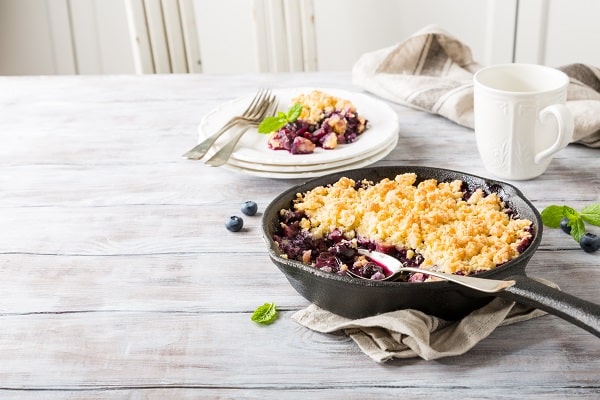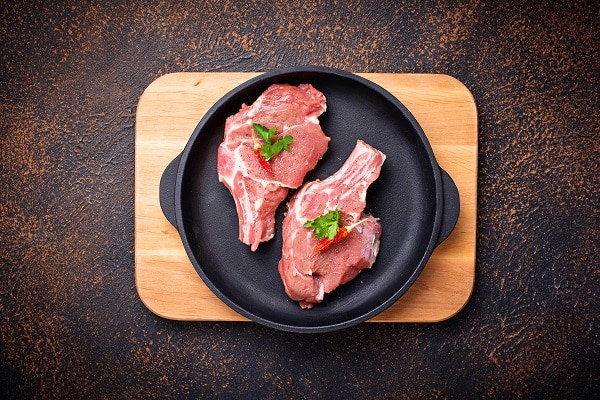Cast-iron pans and cookware are a must-add to your cookware collection. You can land a phenomenal, multi-purpose cast-iron pan that can be passed onto generations for a very reasonable amount of money. Not only professionals, but also all home chefs are aware that a cast-iron pan can be the hardest-working piece of cookware you can own. However, as great as this cookware is, it comes with its own set of rules to help you care for it.
So, if this is your first time investing in any cast-iron cookware, here is everything you need to know about it.
What is Cast-Iron Cookware?

Cast-iron cookware is made by pouring molten iron in a sand mold, and then giving it time to cool down before breaking away the sand. This cookware is extremely viable and durable – so much so, that it will last you many lifetimes. In fact, it isn’t uncommon for cast-iron cookware to be passed down from generation to generation.
Cast-iron cookware is pretty heavy and is also equally versatile as it can be used over high heat on any stovetop including a gas, glass, electric, or induction burner. Moreover, it can also be used in the oven, on a grill, or even over a campfire. Since cast iron has an extremely high heat tolerance, it is a go-to pan for simmering beans or searing meat. Cast-iron skillets are undoubtedly the best medium to use to get the perfect ribeye steak with a crusty exterior and rosy interior.
Cast-iron is a specifically superior cook material as it is quite dense and porous. This means that it takes some time to heat up, gets very hot, and retains and distributes heat evenly – better than any other cooking material.
How to Use Cast-Iron Cookware

Even though it has a great heat retention, cast-iron cookware heats up quite slowly. The best option is to preheat your cast-iron pan or cookware on the stove-top or the oven with some oil before putting in anything else. Preheating your pan keeps food from sticking to it, adds a nice crusty layer to your food, and also prevents the build-up of additional layers of seasoning. Cast-iron cookware can be used to make both sweet and savory dishes, but you will need to clean it up thoroughly between uses to prevent transferring on any flavors.
The first thing you need to do when you get cast-iron cookware is – seasoning it!
Wondering what seasoning is and what it does?
Well, seasoning is oil baked onto a cast-iron pan that forms a stick-resistant surface that keeps the pan from rusting. This is to be done only for those pans that aren’t pre-seasoned. So, make sure to read that on the box. Over a certain period of time, you will notice the seasoning building up on your cast-iron cookware until a slick patina develops.
Factors to Consider When Buying Cast-Iron Cookware
Here are some aspects to consider when investing in cast-iron cookware such as a cast-iron skillet or pan.
Weight

Cast-iron is generally pretty heavy. So, you need to make sure that the pan or skillet you’re investing in isn’t so heavy that you face problems in lifting it. If you can get a good grip on your cast iron’s handle with a pot holder or oven mitts, then it’s great, considering that you’ll can’t grab cast iron handles without protection.
Helper Handle
Does your cast-iron cookware have helper handles? If it doesn’t, then it isn’t a very good option for you. Having handles on the sides of your cast-iron pan or skillet gives you a good grip and makes it easier to lift. You need to remember that cast-iron cookware is quite heavy to begin with and it’s going to get even heavier when it’s loaded with food.
Shape

The last thing you need to consider when buying a cast-iron pan or skillet is its – shape. Before you invest in a cast-iron pan, pot, or skillet, you should consider what you plan on cooking in it.
The Best Way to Clean Cast-Iron Cookware

Is it okay to use soap?
Is it okay to just simple wipe cast-iron cookware after cooking?
There are many on-going debates about the best way to clean cast-iron cookware. Well, it is completely fine if you want or need to use soap to clean your cast-iron pan or skill. It will take more than soap to remove the precious patina that has bonded well with your pan. However, it isn’t necessary for you to use soap to clean up your pan.
Some people also choose to simply wipe their pan after cooking, which is fine as well. Also, those who prefer a cleaner cast-iron pan use water, kosher salt, and a scrub brush to clean it. If you see notice too many stubborn stuck-on bits of food on your pan, you can boil some water in it and use a wooden spoon to clean it up. Either way, once you’re done cleaning your cast-iron cookware, you need to dry it thoroughly and maybe even heat it a little over low heat to eliminate any lingering moisture from the surface. You can complete this process by rubbing a very thin layer of oil and using a paper towel to get rid of the excess. Remember that it is never a good idea to your leave your cast-iron cookware soaked or in the dishwasher.
The Best Way to Store Cast-Iron Cookware
You need to store your cast-iron cookware very carefully. If you’re keeping two cast-iron pans or skillets together (one on top of another), you need to place a paper towel between the piece. This will help prevent any damage or scratches from occurring on the inside of your cookware, plus it will also help absorb any moisture and prevent rusting.
From pans to pots, skillets to kettles, you have a variety of cookware options to choose from when it comes to cast-iron cookware. No matter which item you choose, cast-iron cookware is an investment rather than an expense.


